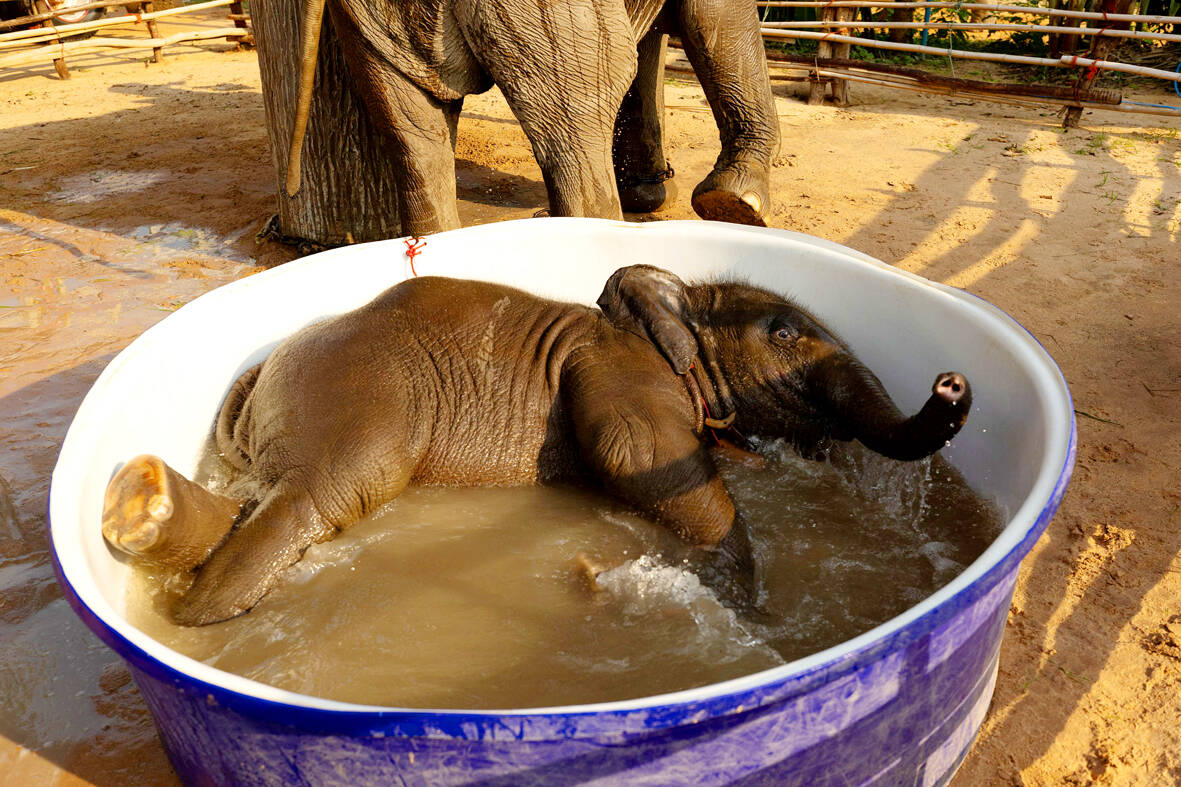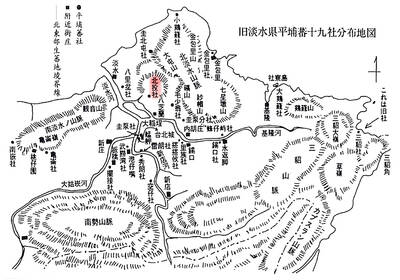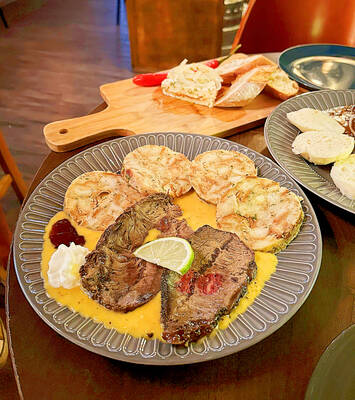In the northeastern village of Ban Ta Klang in Thailand, Siriporn Sapmak starts her day by doing a livestream of her two elephants on social media to raise money to survive.
The 23-year old, who has been taking care of elephants since she was in school, points her phone to the animals as she feeds them bananas and they walk around the back of her family home.
Siriporn says she can raise about 1,000 baht (US$27.46) of donations from several hours of livestreaming on TikTok and YouTube but that is only enough to feed her two elephants for one day.

Photo: Reuters
It is a new — and insecure — source of income for the family, which before the pandemic earned money by doing elephant shows in the Thai city of Pattaya. They top up their earnings by selling fruit.
Like thousands of other elephant owners around the country, the Sapmak family had to return to their home village as the pandemic decimated elephant camps and foreign tourism ground to a virtual halt. Only 400,000 foreign tourists arrived in Thailand last year compared with nearly 40 million in 2019.
Some days, Siriporn doesn’t receive any donations and her elephants are underfed.
“We are hoping for tourists to (return). If they come back, we might not be doing these livestreams anymore,” she said.
“If we get to go back to work, we get a (stable) income to buy grass for elephants to eat.”
Edwin Wiek, founder of Wildlife Friends Foundation Thailand, estimates that at least a thousand elephants in Thailand would have no “proper income” until more tourists return.
Thailand has about 3,200 to 4,000 captive elephants, according to official agencies, and about 3,500 in the wild.
Wiek said the Livestock Development Department needs to find “some kind” of budget to support these elephants.
“Otherwise, it’s going to be difficult to keep them alive I think for most families,” he said.
‘LIKE FAMILY’
The families in Ban Ta Klang, the epicenter of Thailand’s elephant business located in Surin province, have cared for elephants for generations and have a close connection to them.
Elephant shows and rides have long been popular with tourists, especially the Chinese, while animal rights groups’ criticism of how elephants are handled there has given rise to tourism in sanctuaries.
“We are bound together, like family members,” Siriporn’s mother Pensri Sapmak, 60, said.
“Without the elephants, we don’t know what our future will look like. We have today thanks to them.”
The government has sent 500,000 kilograms of grass across multiple provinces since 2020 to help feed the elephants, according to the Livestock Development Department, which oversees captive elephants.
Elephants, Thailand’s national animal, eat 150kg to 200kg each day, according to the Wildlife Conservation Society.
Siriporn and her mother, however, said they have not yet received any government support.
“This is a big national issue,” said Livestock Development Department Director-General Sorawit Thanito.
He said the government plans to assist elephants and their caretakers and that “measures along with a budget will be proposed to cabinet,” without giving a time frame.
While the government is expecting 10 million foreign tourists this year, some say this may not be enough to lure elephant owners back to top tourist destinations, given the costs involved. Chinese tourists, the mainstay of elephant shows, have also yet to return amid COVID-19 lockdowns at home.
“Who has the money right now to arrange a truck... and how much security (do) they have that they are really going to have business again when they go back?” said Wiek.
He expected more elephants to be born in captivity over the next year, exacerbating the pressures on their owners.
“Some days we make some money, some days none, meaning there’s going to be less food on the table”,” said Pensri.
“I don’t see a light at the end of the tunnel.”

Seven hundred job applications. One interview. Marco Mascaro arrived in Taiwan last year with a PhD in engineering physics and years of experience at a European research center. He thought his Gold Card would guarantee him a foothold in Taiwan’s job market. “It’s marketed as if Taiwan really needs you,” the 33-year-old Italian says. “The reality is that companies here don’t really need us.” The Employment Gold Card was designed to fix Taiwan’s labor shortage by offering foreign professionals a combined resident visa and open work permit valid for three years. But for many, like Mascaro, the welcome mat ends at the door. A

The Western media once again enthusiastically forwarded Beijing’s talking points on Japanese Prime Minister Sanae Takaichi’s comment two weeks ago that an attack by the People’s Republic of China (PRC) on Taiwan was an existential threat to Japan and would trigger Japanese military intervention in defense of Taiwan. The predictable reach for clickbait meant that a string of teachable moments was lost, “like tears in the rain.” Again. The Economist led the way, assigning the blame to the victim. “Takaichi Sanae was bound to rile China sooner rather than later,” the magazine asserted. It then explained: “Japan’s new prime minister is

NOV. 24 to NOV. 30 It wasn’t famine, disaster or war that drove the people of Soansai to flee their homeland, but a blanket-stealing demon. At least that’s how Poan Yu-pie (潘有秘), a resident of the Indigenous settlement of Kipatauw in what is today Taipei’s Beitou District (北投), told it to Japanese anthropologist Kanori Ino in 1897. Unable to sleep out of fear, the villagers built a raft large enough to fit everyone and set sail. They drifted for days before arriving at what is now Shenao Port (深奧) on Taiwan’s north coast,

Divadlo feels like your warm neighborhood slice of home — even if you’ve only ever spent a few days in Prague, like myself. A projector is screening retro animations by Czech director Karel Zeman, the shelves are lined with books and vinyl, and the owner will sit with you to share stories over a glass of pear brandy. The food is also fantastic, not just a new cultural experience but filled with nostalgia, recipes from home and laden with soul-warming carbs, perfect as the weather turns chilly. A Prague native, Kaio Picha has been in Taipei for 13 years and